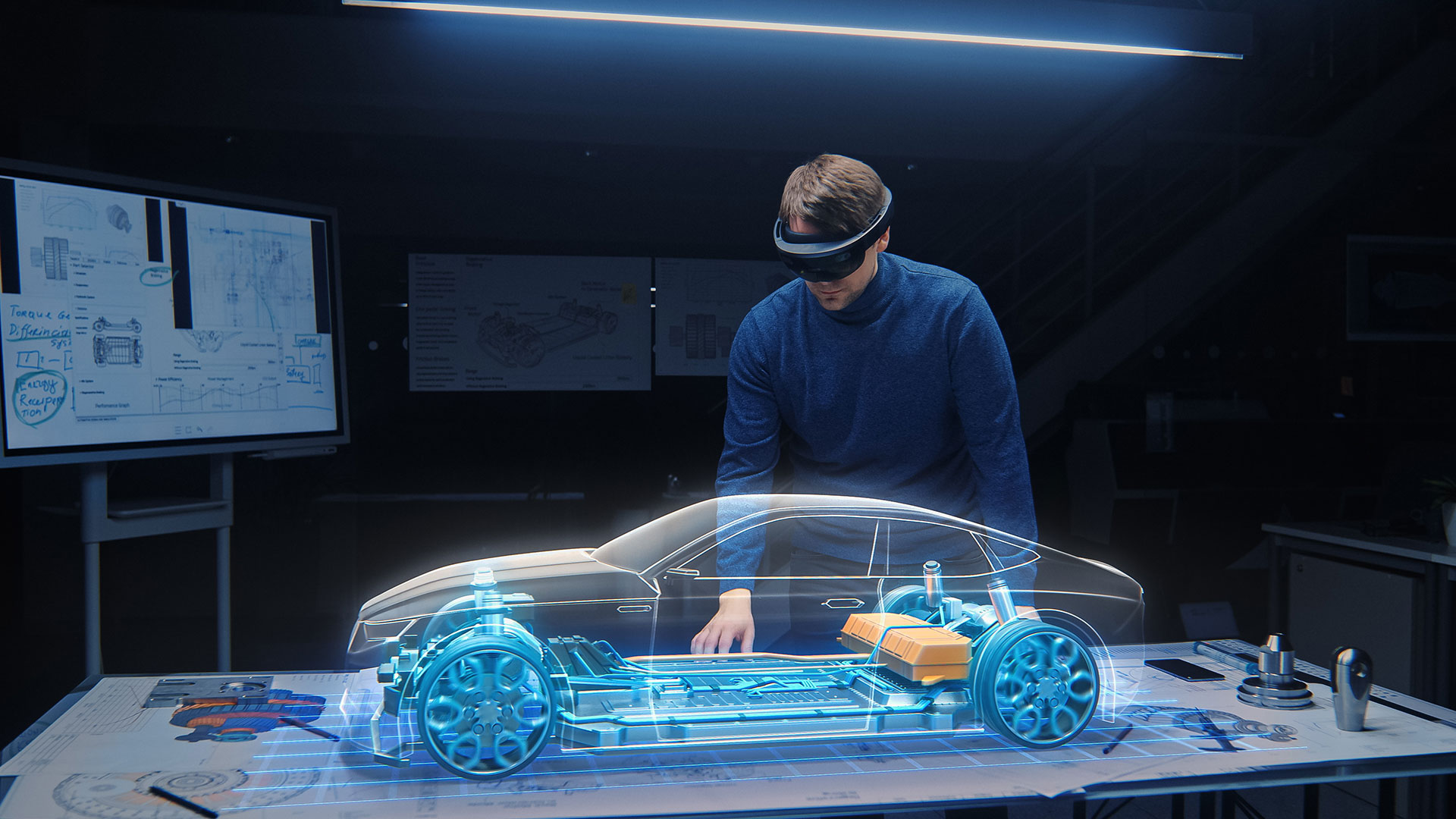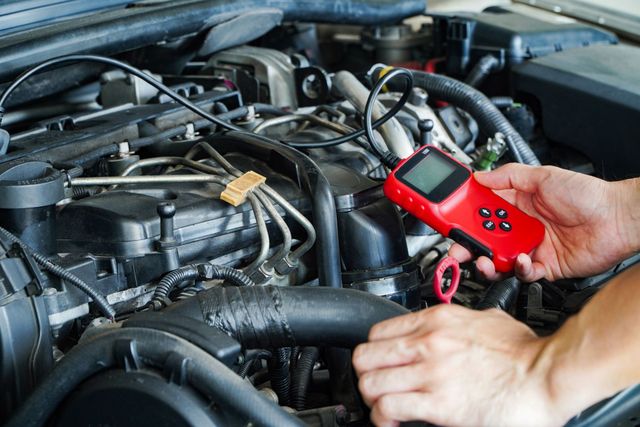
The Role of Augmented Reality in Automotive: Transforming the Industry
Augmented reality (AR) is one of the most exciting technological advancements transforming the automotive industry. By overlaying digital information onto the physical world, AR creates immersive experiences that enhance the way vehicles are designed, built, and used. From manufacturing and design to driver assistance and in-vehicle entertainment, augmented reality in automotive is improving both the customer experience and operational efficiency. In this article, we will explore the various applications of AR in the automotive industry and how it is reshaping the future of transportation.
What is Augmented Reality?
Augmented reality is a technology that blends digital content with the physical environment in real-time. Unlike virtual reality (VR), which creates entirely immersive digital environments, AR enhances the real world by overlaying digital information, images, or data onto the user’s view of their surroundings. This integration can be experienced through various devices such as smartphones, tablets professionalautomechanic.com, AR glasses, or head-up displays (HUDs).
In the automotive industry, AR is used to provide real-time information, assist with navigation, improve safety features, and even streamline vehicle design and manufacturing processes. The potential applications of AR in the automotive sector are vast, with innovation driving the future of both the design and usage of vehicles.
Enhancing Vehicle Design with Augmented Reality
One of the most exciting applications of AR in automotive is its impact on the vehicle design process. Designers and engineers can use AR to visualize new car models, components, and features in three dimensions before they are physically built. This technology allows for more efficient and accurate design iteration, as it enables stakeholders to view and manipulate models in a way that traditional sketches or physical prototypes cannot offer.
Augmented reality tools allow car designers to superimpose digital car parts and features onto physical mockups, making it easier to evaluate the functionality and aesthetics of different designs. Additionally, AR can be used for collaborative design, where teams across the world can interact with the same model in real-time, streamlining the design process and reducing time to market.
Augmented Reality in Manufacturing and Maintenance
Augmented reality also plays a crucial role in automotive manufacturing and maintenance. In vehicle assembly plants, AR glasses and heads-up displays are used by workers to access real-time information about the production process. For example, AR can show assembly instructions, guide workers through complex tasks, and provide visual overlays to ensure that each part is installed correctly. This leads to increased productivity, fewer errors, and enhanced quality control.
In automotive repair and maintenance, AR can assist technicians by overlaying step-by-step instructions onto the car’s components, showing how to diagnose problems and perform repairs. AR-enabled glasses can provide visual references or highlight areas that need attention, improving accuracy and efficiency during service. This not only reduces downtime for vehicles but also enhances the overall service experience for customers.
Augmented Reality for Enhanced Driver Assistance Systems
One of the most transformative uses of AR in automotive is the integration of augmented reality into driver assistance systems. AR is being used to create advanced heads-up displays (HUDs) that project crucial driving information, such as speed, navigation directions, and hazard warnings, directly onto the windshield. This allows drivers to access essential data without having to take their eyes off the road, improving situational awareness and safety.
In addition to basic driving information, AR can also provide more advanced features, such as real-time hazard detection, highlighting obstacles, pedestrians, or other vehicles on the road. By overlaying these digital cues onto the driver’s field of vision, AR enhances the driver’s ability to respond quickly to potential hazards, reducing the risk of accidents and improving road safety.
Some AR systems even provide navigation overlays that highlight optimal driving paths and lanes on the road, allowing for smoother navigation, especially in complex traffic conditions. These AR systems not only improve the driving experience but also make navigation more intuitive and user-friendly.
Augmented Reality in In-Vehicle Entertainment
In addition to safety and navigation, AR is also enhancing in-vehicle entertainment systems. Through the use of AR, car manufacturers are offering new, engaging ways for passengers to interact with their environment. For example, AR can be used to transform windows into interactive screens, where passengers can view media content, play games, or access travel information during long journeys.
With AR, passengers can interact with their surroundings in a way that was previously not possible. AR could allow for personalized experiences such as viewing 3D maps or educational content tailored to the journey, turning a vehicle ride into an immersive, entertaining experience. These advancements could revolutionize how people view travel, providing new forms of in-car entertainment and information sharing.
AR for Vehicle Customization and Personalization
Another exciting application of augmented reality in automotive is in the area of vehicle customization. AR tools allow customers to visualize and customize the look of their vehicle before making any purchase decisions. With AR, customers can digitally “try out” different colors, finishes, and accessories, seeing how these elements would look on their own vehicle in real-time.
This customization experience enhances customer satisfaction by allowing them to engage with the design process more interactively. Car buyers can experience a much higher degree of personalization, making the purchasing process more enjoyable and ensuring that they make informed decisions.
Improving Vehicle Sales and Marketing with Augmented Reality
Augmented reality is also being used as a powerful tool in automotive sales and marketing. Car manufacturers and dealerships can create AR-based advertising campaigns that allow potential customers to experience vehicles in new and exciting ways. For example, AR apps allow users to virtually place a car model in their driveway or visualize it in their surroundings before making a purchase. This interactive experience can help customers better understand how a vehicle will fit into their lives and environment.
Furthermore, AR can enhance showroom experiences, where customers can use mobile devices or AR glasses to view detailed, interactive 3D models of vehicles. Customers can explore the features of a car in an immersive way, gaining a deeper understanding of its specifications, safety features, and performance without physically interacting with the vehicle.
The Future of Augmented Reality in Automotive
As augmented reality technology continues to evolve, its role in the automotive industry is expected to grow exponentially. We can anticipate more advanced driver assistance systems that use AR to provide even richer and more detailed information. The integration of AR with autonomous vehicles could also lead to new ways of interacting with the vehicle and its environment, providing real-time data on the car’s surroundings.
In addition, the integration of AR with other emerging technologies, such as 5G connectivity and artificial intelligence (AI), will open up even more possibilities. AI-powered AR systems could learn and adapt to a driver’s preferences and behaviors, offering personalized assistance in real-time. The combination of these technologies will transform the way we experience driving, making it safer, more intuitive, and more enjoyable.
Conclusion
Augmented reality in automotive is reshaping how vehicles are designed, manufactured, driven, and marketed. By enhancing design processes, improving safety, and providing engaging experiences for passengers and drivers, AR technology is setting the stage for a new era of automotive innovation. As AR continues to evolve, we can expect even more transformative applications in the automotive industry, bringing new levels of convenience, entertainment, and safety to drivers and passengers around the world. The future of AR in automotive is not only exciting but also full of opportunities to enhance every aspect of the automotive experience.


